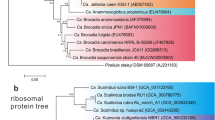Abstract
Molecular methods were carried out to detect Penicillium griseofulvum, a dominant species related to heavy metal pollution, which was screened from marine contaminated sediments. Based on differences in internal transcribed spacer (ITS) sequences of Penicillium genus and specific isoamyl alcohol oxidase (IAO) sequences, species-specific primers AS1/RS4 and IAO1/IAO2 of Penicillium griseofulvum were designed and synthesized which were then employed in optimized PCR systems. The detection sensitivities were compared through ordinary PCR and nested-PCR using two pairs of primers, respectively. Both primer pairs could exclusively amplify destined DNA fragment from contaminated environmental samples in our researches. As for primers AS1/RS4, the detection sensitivity for spores (pure spore DNA) could be 10 fg/μl and 10 spores, respectively, and the detection sensitivity for the sediments was 102 spores/0.25 g sediments. While the detection sensitivity of IAO1/IAO2 primers was lower than that of AS1/RS4. Despite the difference in detection sensitivity, it is feasible that the species-specific primers could be used as probes for the detection of environmental pollution dominant species, Penicillium griseofulvum, since the frequency of occurrence and amount of this strain could preferably indicate the pollution degree.





Similar content being viewed by others
References
Alessandro B, Silvia S, Roberta P et al (2001) Rapid methods to extract DNA and RNA from Cryptococcus neoformans. FEMS Yeast Res 1(3):221–224
Amicucci A, Zambonelli A, Giomaro G (1998) Identification of ectomycorrhizal fungi of the genus Tuber. Mol Ecol 7(3):273–277
Fathy MES, Ashraf AK (2003) Potential biological indicators for glutaraldehyde and formaldehyde sterilization processes. J Int Microbiol Biotechnol 30:135–140
Khaled FN, Daniel C, Ghaby K et al (2006) Brachidontes variabilis and Patella sp. as quantitative biological indicators for cadmium, lead and mercury in the Lebanese coastal waters. Environ Pollut 142:73–82
Mary AD (2006) The isoepoxydon dehydrogenase gene of the patulin metabolic pathway differs for Penicillium griseofulvum and Penicillium expansum. Antonie van Leeuwenhoek 89:1–8
Mary AD (2008) A gene having sequency homology to isoamyl alcohol oxidase is transcibed during patulin production in Penicillium griseofulvum. Curr Microbiol 56:224–228
Monika G, Helgard N, Sibylle K et al (2006) Fungal endophytes in potato roots studied by traditional isolation and cultivation-independent DNA-based methods. FEMS Microbiol Ecol 58:404–413
Richard D, Parke R, John HP et al (2006) Development and applications of microbial ecogenomic indicators for monitoring water quality: report of a workshop assessing the state of the science, research needs and future directions. Environ Monit Assess 116:459–479
Roane TM, Pepper IL (1999) Microbial responses to environmentally toxic cadmium. Microbiol Ecol 38(4):358–364
Shi QY, Bai SM, Tian L et al (2009) Relationship between biodiversity of Deuteromycetes in sediment and marine contamination along the coast within Kiaochow bay. Acta Oceanolog Sin 31(5):1–7
Tang JH, Wang W, Wang YC et al (2006) Molecular detection of Colletotrichum orbiculare. Sci Agric Sin 39(10):2028–2035
Wang L, Zhang WL, Wang YC et al (2004) Molecular detection of Phytophthora sojae using ITS-based PCR assay. J Nanjing Agric Univ 27(3):38–41
Xivanand NV, Somshekhar RD, Anupam S et al (2006) Biological indicators in relation to coastal pollution along Karnataka coast. India Water Res 40:3304–3312
Yan P, Li J, Yang QZ et al (2003) Cloning and sequencing the internal transcribed spacer of the ribosomal gene of Plasmodiophora brassicae and applying it in detecting the pathogen. J Yurman Agric Univ l8(3):228–233
Acknowledgments
This study was supported by the National Natural Science Foundation of China No. 40776098, 40976104, The Ministry of Science and Technology “863” project of China under contract No. 2007AA09Z435, 2007AA091507, 2008AA09Z407.
Author information
Authors and Affiliations
Corresponding author
Rights and permissions
About this article
Cite this article
Shi, Z., Bai, S., Tian, L. et al. Molecular Detection of Penicillium griseofulvum as the Coastal Pollution Indicator. Curr Microbiol 62, 396–401 (2011). https://doi.org/10.1007/s00284-010-9720-4
Received:
Accepted:
Published:
Issue Date:
DOI: https://doi.org/10.1007/s00284-010-9720-4




